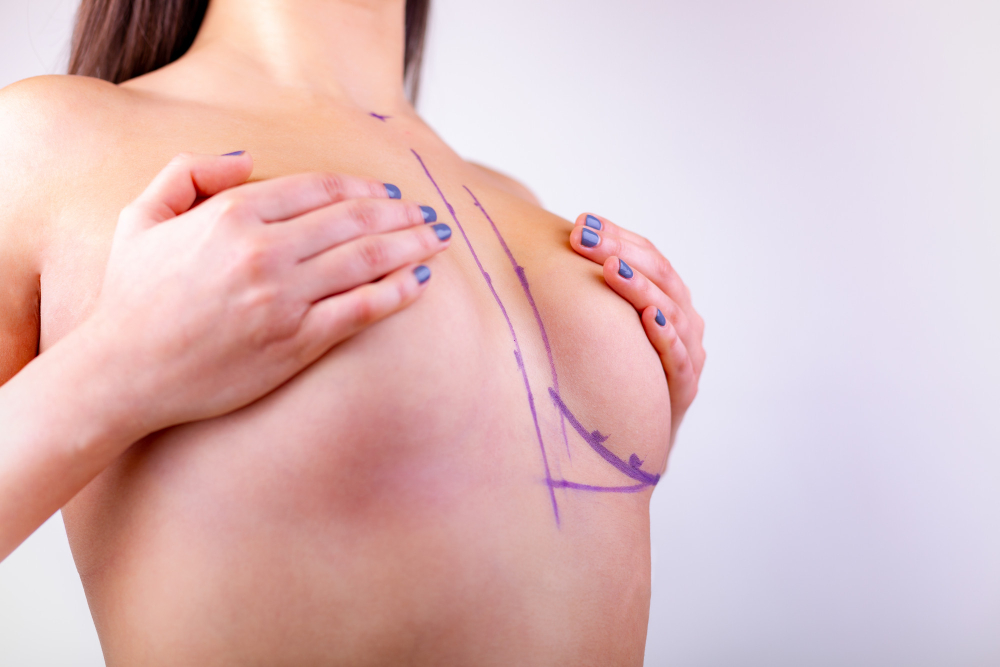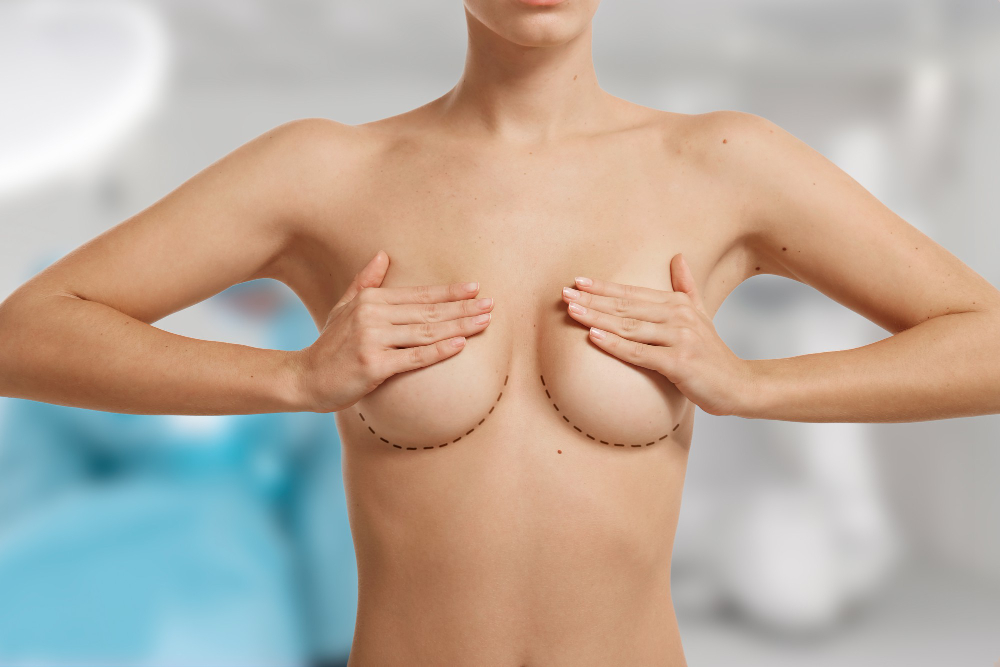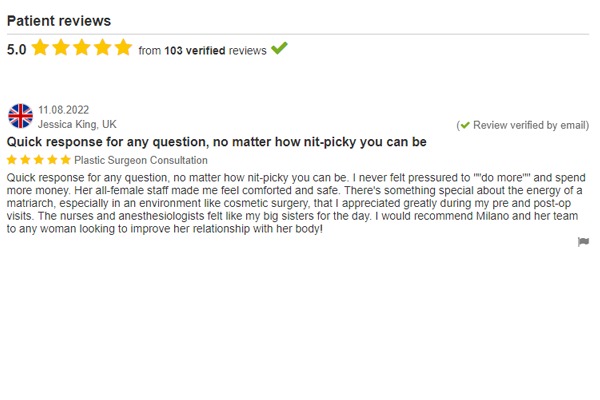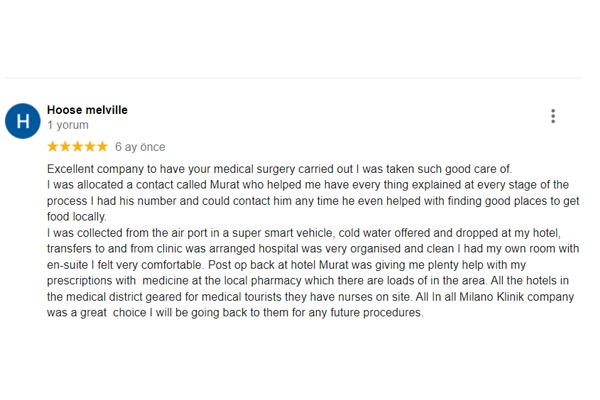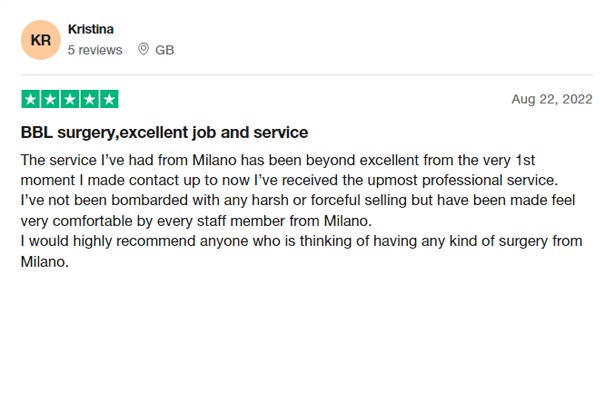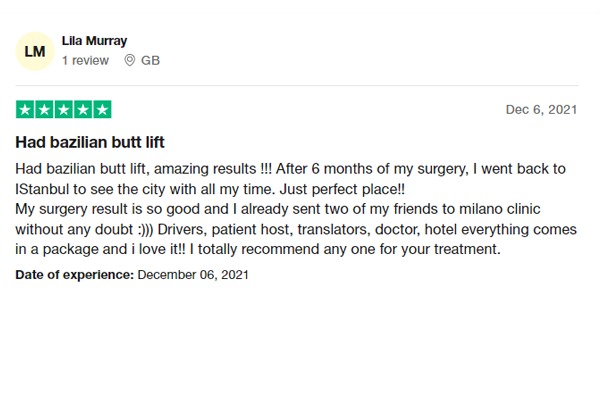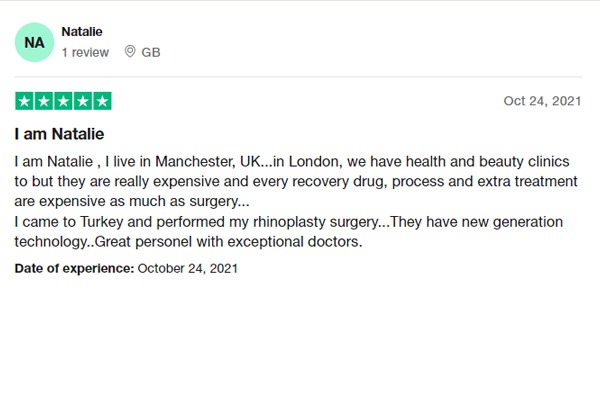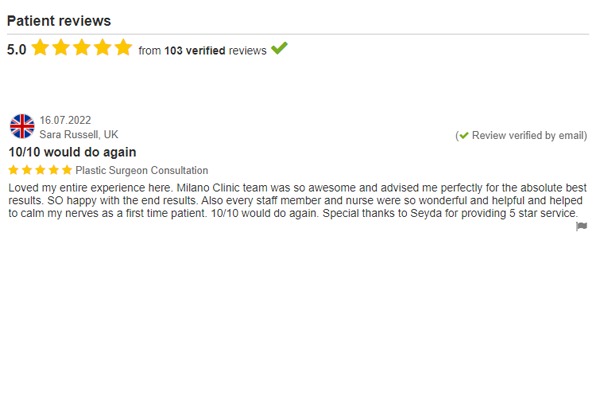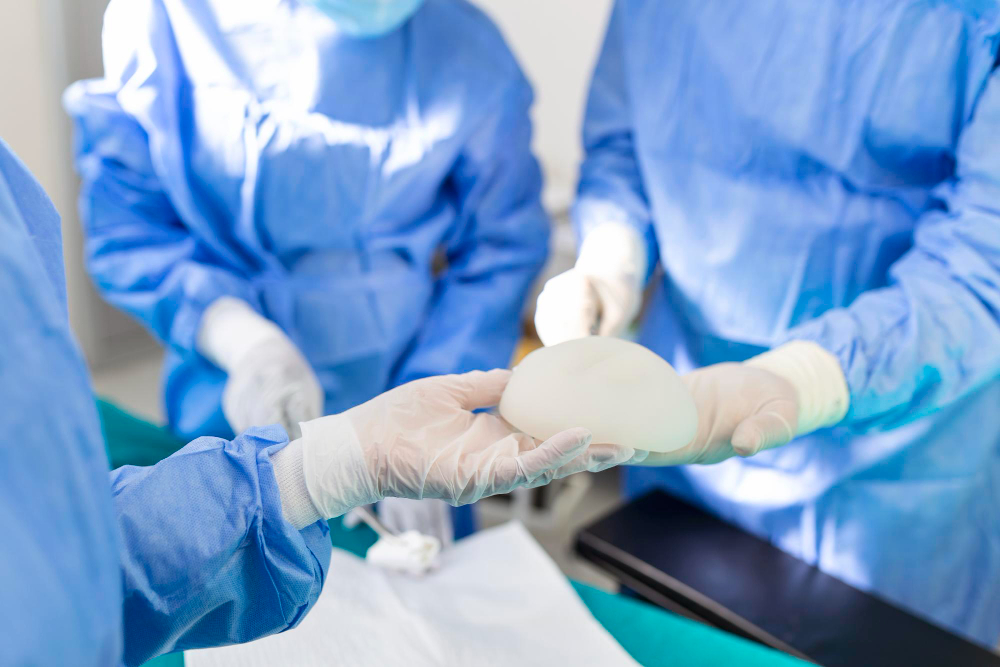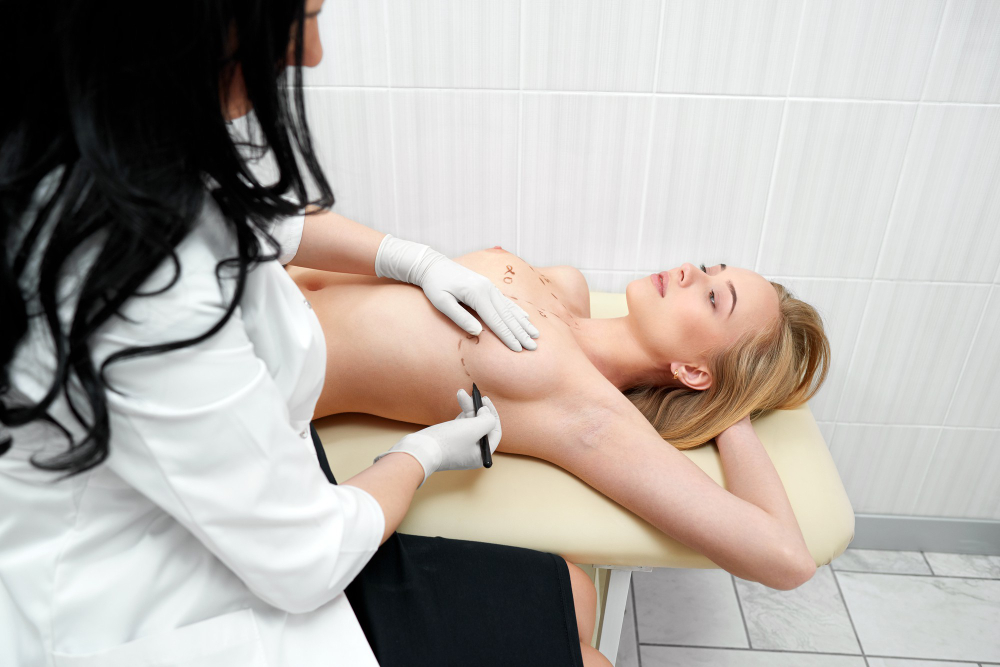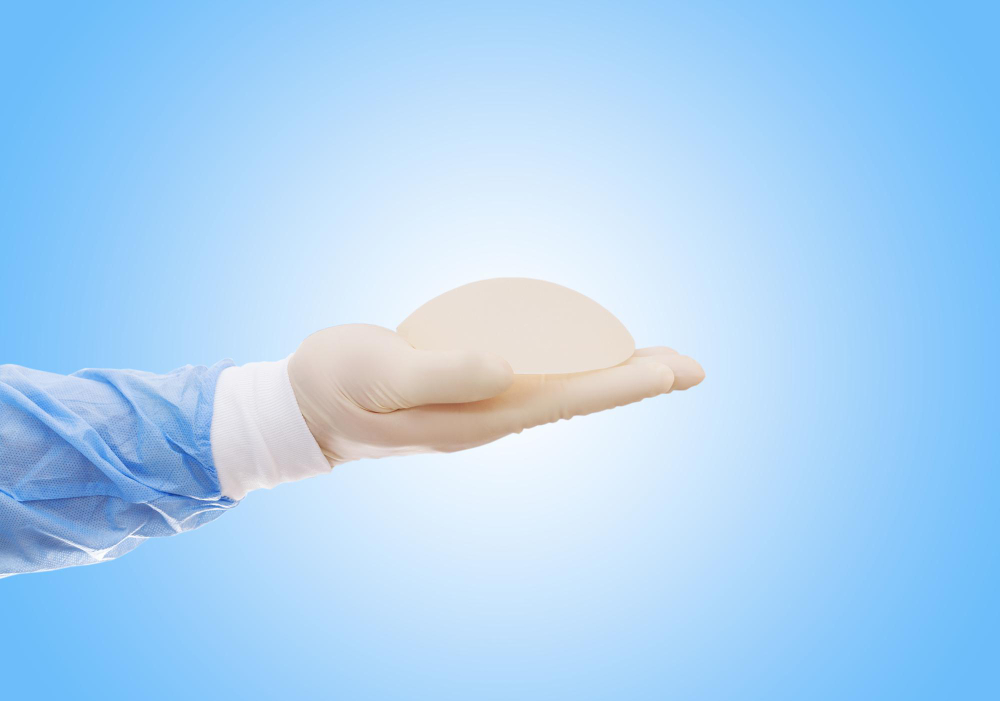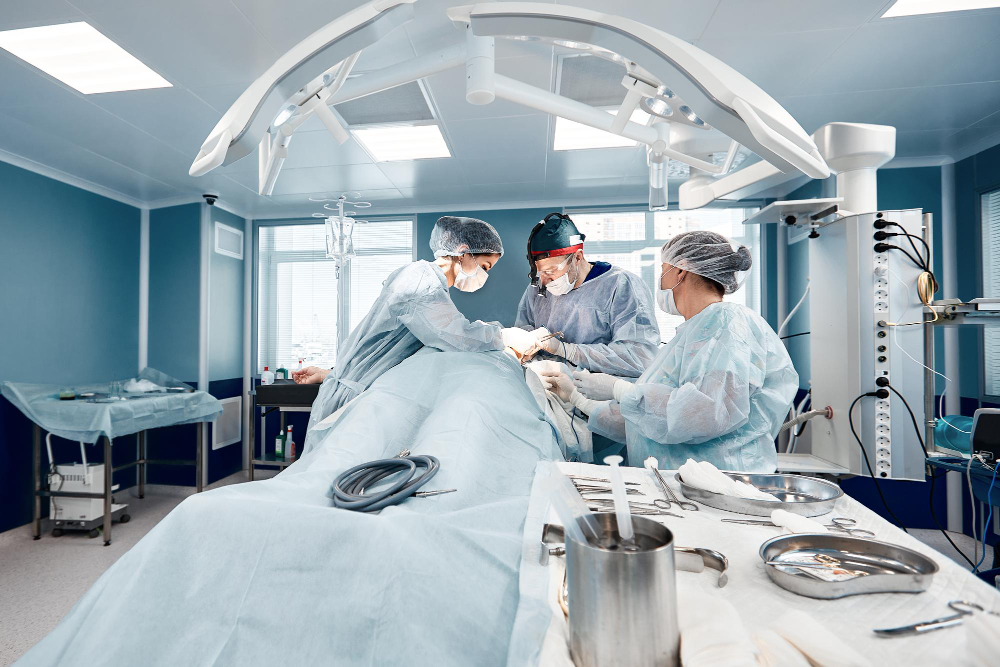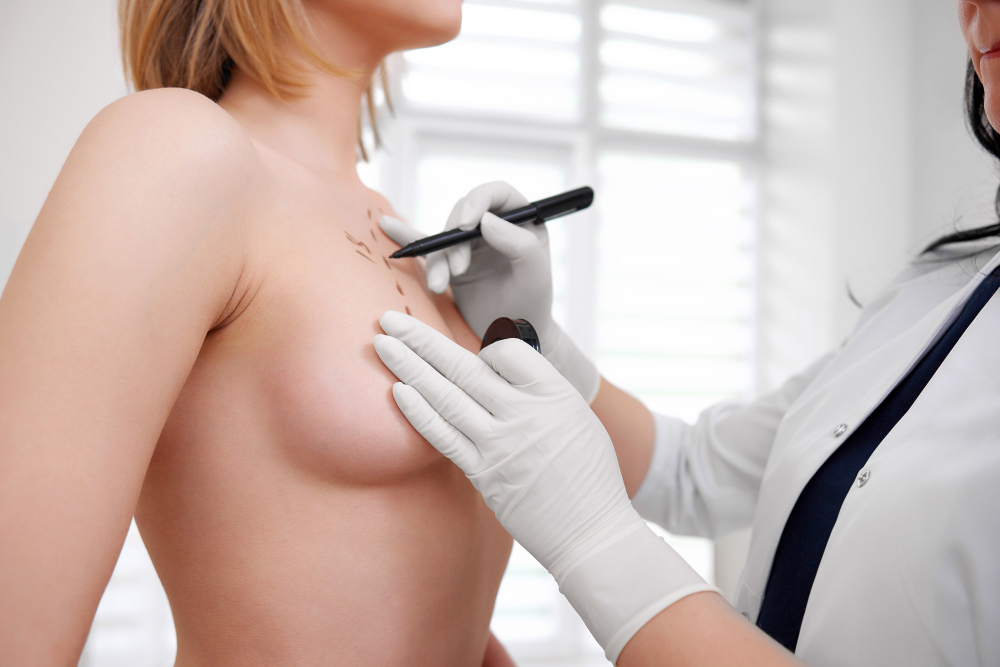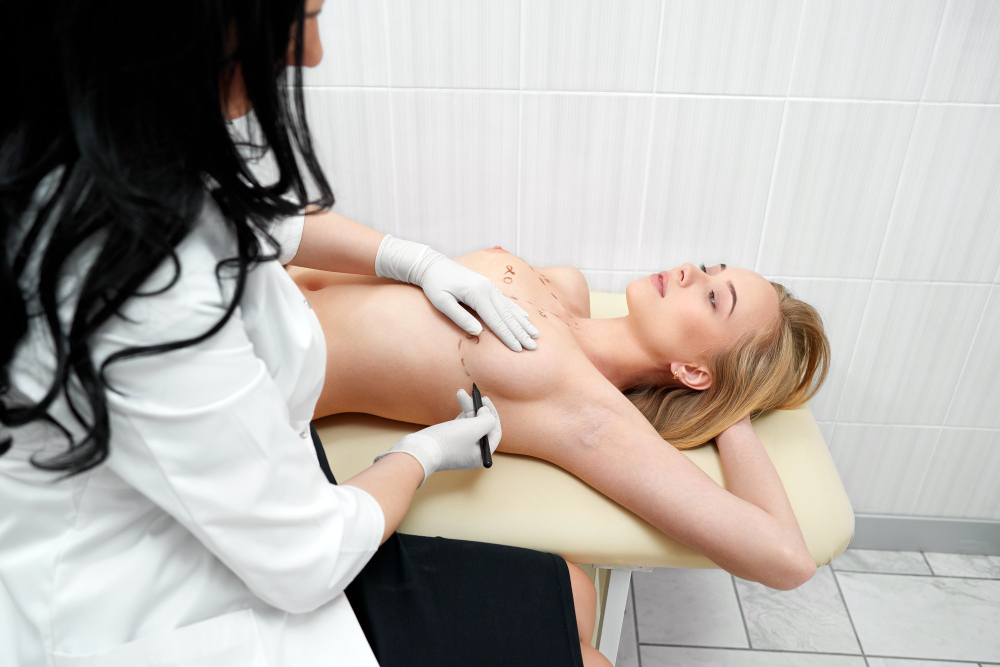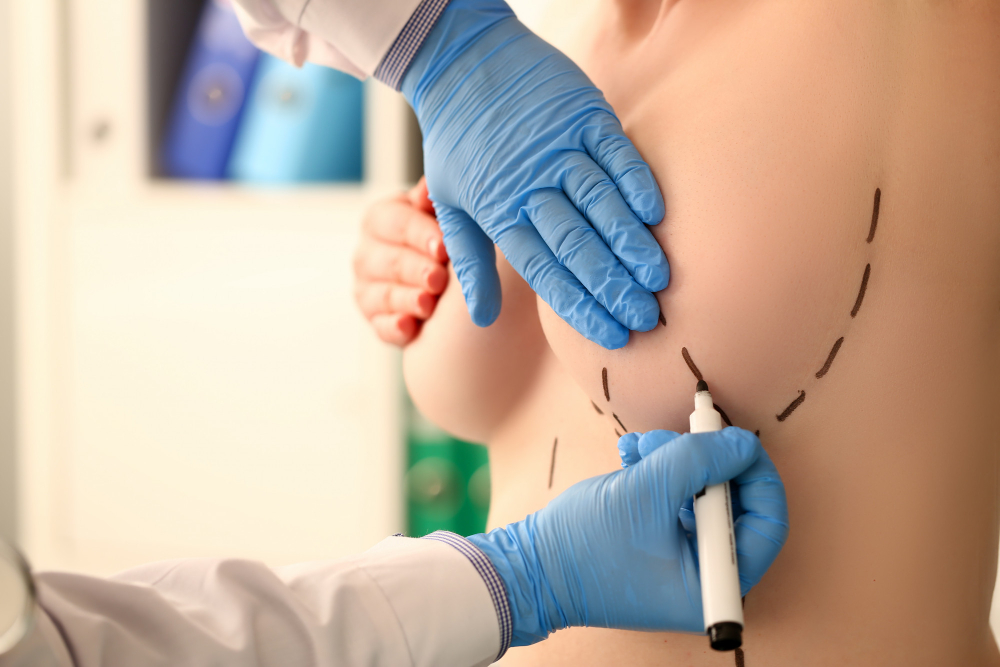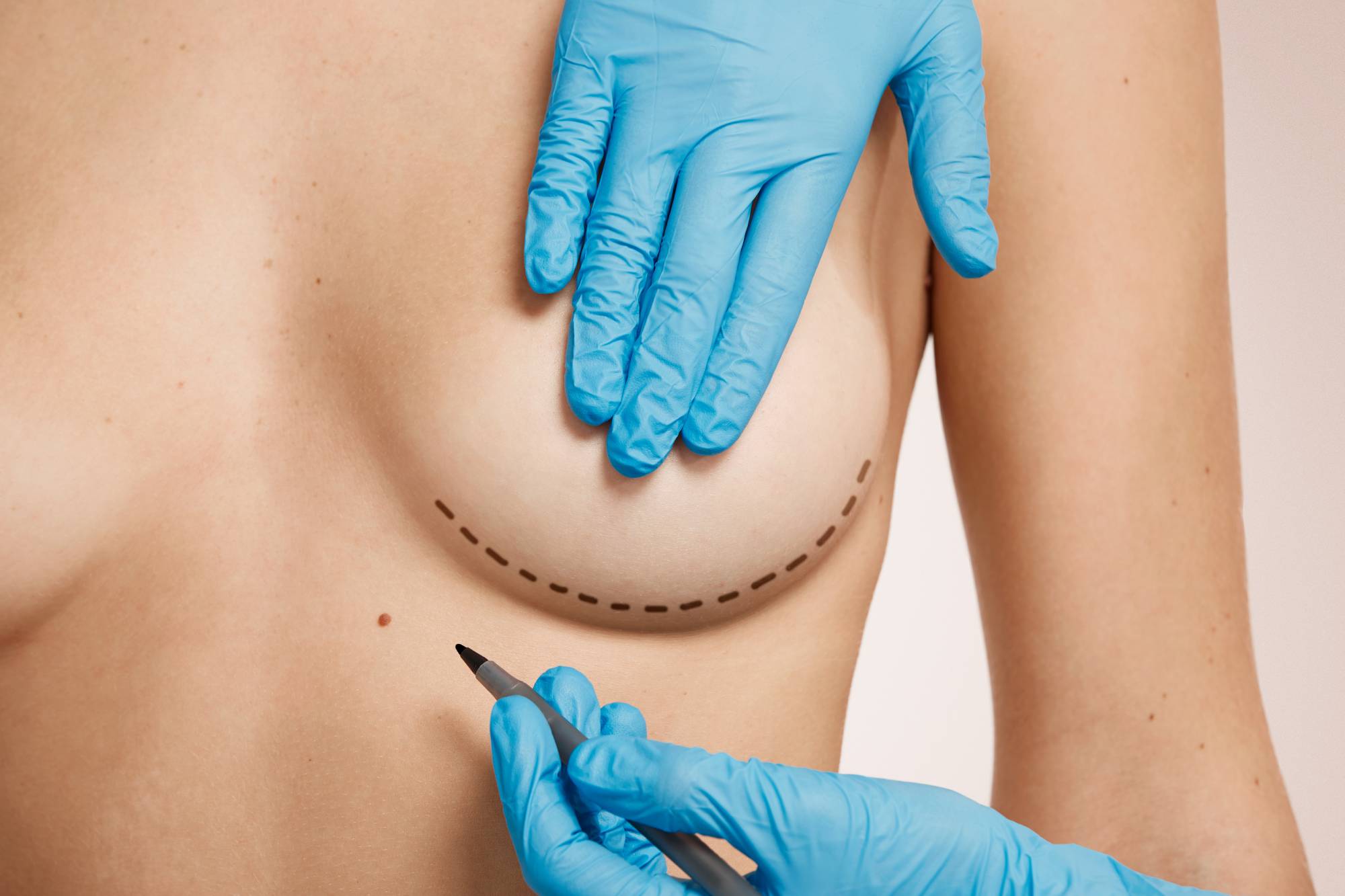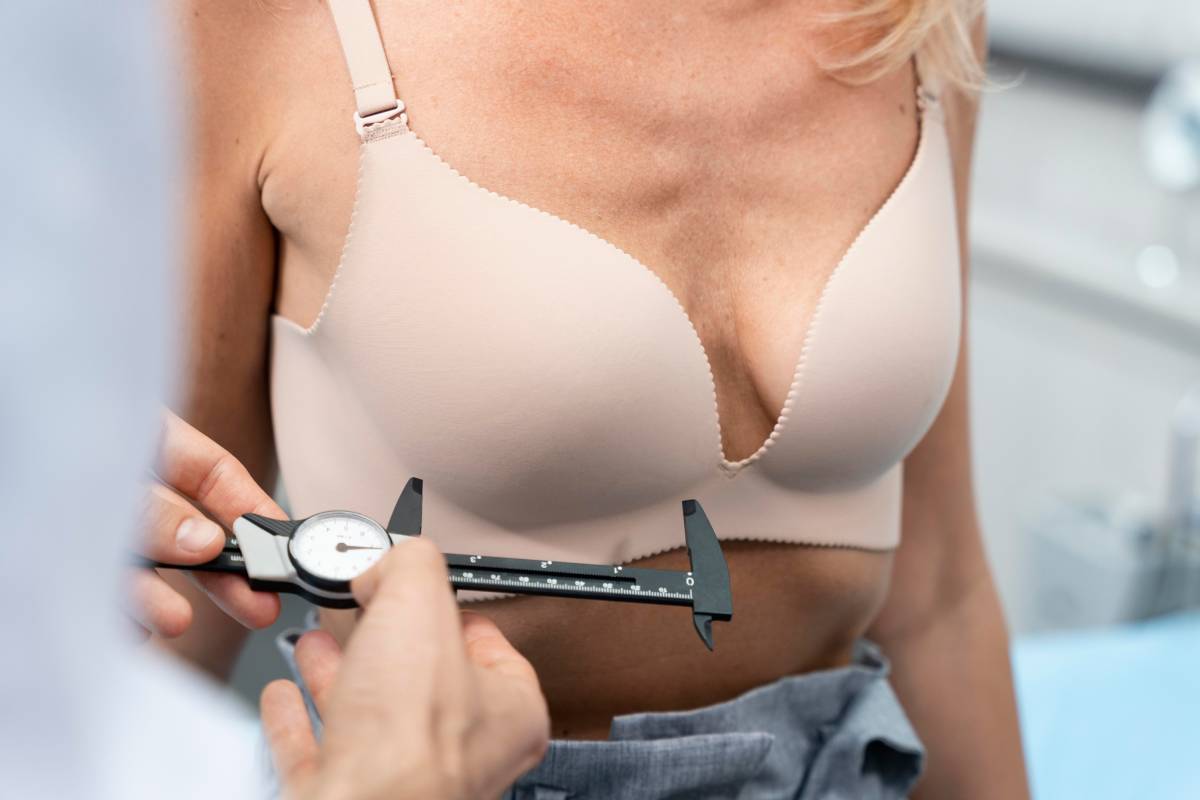REDUCCIÓN DE PEZONES EN TURQUÍA
Real Testimonials
MilanoKlinik Comments
REDUCCIÓN DE PEZONES EN TURQUÍA
Aquí en Milano Clinic en Estambul, realizamos una cirugía de reducción de pezones con cirujanos experimentados. El colapso del pezón puede generar preocupaciones estéticas para las mujeres y causar muchos problemas funcionales, así como trastornos psicológicos. Con la reducción de pezones en Turquía, que proporciona resultados permanentes en poco tiempo, se pueden prevenir los problemas psicológicos.
TARJETA DE CIRUGÍA DE REDUCCIÓN DE PEZONES
| Duración de la operación | 2 horas |
| Área de operación | de mama |
| Tipo de anestesia | General |
| Umbral de dolor | 1 día |
| Hora de inicio | Post/Op 1 |
| Primera ducha | 2 días después |
| Tiempo de recuperación | 1-2 meses |
| Estado de reoperación | 1 año después y depende de las preferencias |
| Gym-Cardio | 1 mes después |
| Tal vez la marca de | sutura |
| Límite de edad | a partir de 18 |
| Tipo de sutura | fundible |
| Menos estado | de edema |
| Hospitalizar | 1 Noche |
| Abrir / Cerrar técnico | Cerrar |
¿QUÉ ES LA REDUCCIÓN DE PEZONES?
Con la cirugía de reducción del pezón, se reduce la proyección que sobresale del pezón. Como uno de los problemas de las mujeres, el pezón colapsado puede ser congénito o posterior. Generalmente, incluso durante la adolescencia, los senos se notan durante el desarrollo. Esta situación trae problemas estéticos, funcionales y psicológicos. Debido a la dificultad de limpieza del pezón, puede haber problemas en la lactancia, así como problemas de infección.
El colapso del pezón se puede solucionar con una operación de reducción rápida del pezón. Este método de tratamiento se puede utilizar para prevenir problemas psicológicos y sexuales.
COSTE DE REDUCCIÓN DE PEZONES
Los precios de la cirugía de reducción del pezón varían según las características específicas de cada operación. Los ejemplos de posibles variantes se basan en la experiencia de los cirujanos y los anestésicos, los costos hospitalarios, las técnicas quirúrgicas y las citas de seguimiento y cuidados posteriores. Contáctenos para conocer más sobre los precios.
PREGUNTAS FRECUENTES SOBRE LA REDUCCIÓN DE PEZONES
Causa del colapso del cable del pezón
La mujer que tiene colapso del pezón primero debe asegurarse de que esto no se considere una enfermedad. Se sabe que esta condición se puede observar en algunos pacientes como resultado de una infección y un cáncer. Si el colapso se debe a una enfermedad, primero se debe realizar el tratamiento.
Como ocurre en todas las operaciones, será más preciso dejar de fumar. Si usa algún medicamento, debe informar al médico antes de la operación.
Determination of Nipple Lead Collapse
Cuando el colapso del plomo del pezón se debe a factores genéticos, se nota en el período de la adolescencia por el crecimiento de las mamas en general. En este caso, las mujeres deben ser tratadas con expertos para poder superar los problemas que están experimentando. Después de la lactancia materna, la mejora de los senos, el cáncer de mama y la pérdida excesiva de peso, no se nota el tejido mamario.
Tal sedimentación del pezón es de diversos grados. Además de los problemas funcionales y mentales en las mujeres, se convierte en un problema estético. Debido al pezón colapsado, se impide el flujo de leche y el bebé no sostiene el pezón. En este caso, la lactancia materna no es posible.
Niveles de colapso del cable del pezón
El colapso del pezón se ve en tres niveles y el primero de ellos es el ligero colapso del colapso del pezón. Será mejor con masaje y presión sobre el pezón. Es muy fácil para estas personas tener un pezón de forma espontánea. Por tanto, no sufren de lactancia.
Se dice que el colapso moderado del pezón ocurre con una ligera fuerza de la punta del pezón. Como resultado de la presión alrededor de la punta del pezón se elimina pero no se obtienen resultados permanentes. Por lo tanto, las personas a menudo logran una operación quirúrgica exitosa.
El colapso avanzado es cuando el pezón no sale con casi ninguna presión o masaje. La lactancia materna no es posible porque estas personas han perdido completamente su función. Y se necesita cirugía para esta situación.
Tratamiento del colapso del cable del pezón
El colapso del pezón tratado quirúrgicamente es uno de los principales problemas para las mujeres. Sin embargo, se pueden aplicar opciones de tratamiento externo de acuerdo con estos niveles de problemas. En el tratamiento del colapso del plomo del pezón, se utilizan métodos apropiados.
El uso de bombas especiales para estimular el pezón y el área circundante puede ser particularmente útil para pezones de leves a moderados. Sin embargo, si hay un colapso grave del pezón, el paciente se trata quirúrgicamente.
En el tratamiento quirúrgico, enfoques como cortar el pezón se pueden realizar colocando un soporte permanente debajo del pezón. Al mismo tiempo, los métodos utilizados se pueden aplicar protegiendo el conducto de la leche. Una mujer que quiere tener un bebé se orienta según el deseo de amamantar.
Sin embargo, es posible encontrar problemas de colapso de la punta de la mama nuevamente después de la cirugía donde se protege el conducto de la leche. En las operaciones donde se corta el conducto lácteo, no existe riesgo de recurrencia del problema en general. Estas operaciones generalmente se completan en 1 hora.
Consideraciones de la reducción del pezón
Si la sedimentación del pezón se desarrolla repentinamente rápidamente, definitivamente debe investigarse. Si existe un problema estructural con el parto de la mujer, se debe contar con el apoyo de un experto para amamantar a su bebé.
La lactancia materna se puede realizar mediante el uso de métodos adecuados. Para facilitar el proceso, el bebé puede absorber la zona marrón con el pezón. Es importante para quienes tienen colapso del pezón mantener limpia esta área. Limpie regularmente el pezón con agua tibia y jabón. Si la higiene disminuye, aumenta el riesgo de infección.
¿Quién puede sufrir un colapso de plomo en el pezón?
El colapso del plomo del pezón puede ocurrir tanto en hombres como en mujeres. Se sabe que un promedio del 10% de las mujeres ha experimentado este problema y es necesario prestar atención a los controles.
¿Cómo se realiza la operación de reducción del pezón?
La operación se realiza en muy poco tiempo y el paciente no siente ningún dolor durante la operación. Si el acortamiento del conducto de la leche se debe al colapso del plomo del pezón, el área que se ve como resultado del rizado de los conductos de la leche en una región, se necesita la primera apertura de los conductos de la leche.
El conducto de la leche tiene elongación y la relajación se hace posible ya que el pezón está en condiciones normales. La operación se realiza con anestesia local y la persona no siente ningún dolor. Si el paciente tiene algún dolor, necesita usar algunos analgésicos.
Las personas deben consultar a su médico antes de usar cualquier medicamento. Los efectos secundarios pueden afectar negativamente a la persona. Es posible dar de alta al paciente el mismo día después de la cirugía. El paciente debe tener cuidado de proteger el área del pecho y evitar traumatismos.
Riesgos de la reducción del pezón
Existen algunos riesgos en la cirugía de pezones como en toda operación. Una vez que el médico ha examinado al paciente y ha decidido que es apto para la cirugía, se deben explicar estos riesgos. Los riesgos de la cirugía de reducción del pezón incluyen pérdida temporal de la sensibilidad en el seno y daño a los conductos mamarios.
Estos riesgos rara vez se ven en la operación. Sin embargo, el paciente debe conocer esta información. Será más preciso si las mujeres que planean quedar embarazadas supieran que el conducto de la leche podría dañarse directamente.
Sin embargo, las personas prefieren este tipo de cirugía antes del embarazo por la facilidad de la lactancia. Esta situación depende completamente de las preferencias del propio paciente.
El paciente es consciente de los riesgos que son raros, pero no hay problema en la aplicación de la cirugía. La presencia de entumecimiento en la cabeza de la mama está directamente relacionada con el metabolismo y la estructura corporal de la persona. Esta situación se ve muy poco y casi nunca afecta la vida de la persona. Debido a que es temporal, no es necesario que las personas estén ansiosas o recurran a un tratamiento. El entumecimiento del pezón es muy raro y puede aparecer de forma permanente en algunos casos.
Después de la cirugía de colapso del cable del pezón
En exactamente media hora, se deben cumplir una serie de elementos para la operación. Entre los elementos que se deben considerar para el postoperatorio, que es una semana promedio de recuperación, el paciente debe evitar las actividades físicas en el primer mes posterior a la operación.
Especialmente el pezón debe mantenerse higiénico. Dado que los rastros que se verán después de la cirugía no serán permanentes, se debe abstenerse de usar cualquier medicamento o crema sin consultar al médico.
No se realiza ninguna costura debido al uso de cuerdas de fusión en las puntadas que se aplicarán durante la operación. Sin embargo, el médico debe examinar al paciente después de la primera semana. Definitivamente se determina si hay algún problema durante el examen.
Después de la operación, la persona puede volver a su vida diaria después de una semana. Sin embargo, la persona debe tener cuidado de no recibir golpes en el área del pezón. Se aconseja a los pacientes que utilicen antibióticos con regularidad después de la cirugía. Estos medicamentos no deben descuidarse.
Reducción de pezones y conductos lácteos
La razón más importante de estos problemas es la incapacidad de desarrollar un conducto lácteo. Si el conducto de la leche se abre hasta la punta de esta parte, se vuelve hacia adentro, esto dificulta que el bebé entre en contacto con los pezones y evita que la leche fluya. Si el período de desarrollo del pezón colapsa, es una señal de que estos conductos lácteos no se han formado.
Los enlaces se retiran al pezón. No hay conductos lácteos y la leche no puede salir del conducto lácteo. Este tipo de malestar debe sospecharse cuando el pezón no sale al comprimirlo entre los dos dedos.
En estos pacientes, la imagen solo puede corregirse mediante cirugía. Sin embargo, la paciente no puede amamantar a su bebé. Cuando se realiza el tratamiento quirúrgico de la cavidad torácica es posible corregir los pezones. Esta cirugía se realiza con anestesia local y dura alrededor de 1 hora.
Existen muchos métodos quirúrgicos para corregir este problema. En todos los métodos, el tratamiento se realiza interrumpiendo la ligadura del pezón y proporcionando un soporte temporal o permanente debajo del pezón. En la mayoría de las técnicas aplicadas durante la cirugía, los conductos mamarios deben cortarse para sacar el pezón. Si no se cortan los conductos, el pezón se vuelve a colapsar. Por lo tanto, la lactancia materna no es posible debido al corte del conducto lácteo.
Especialmente las mujeres que planean quedar embarazadas pueden solicitar una cirugía de colapso del pezón debido a la prevención de problemas durante la lactancia.


